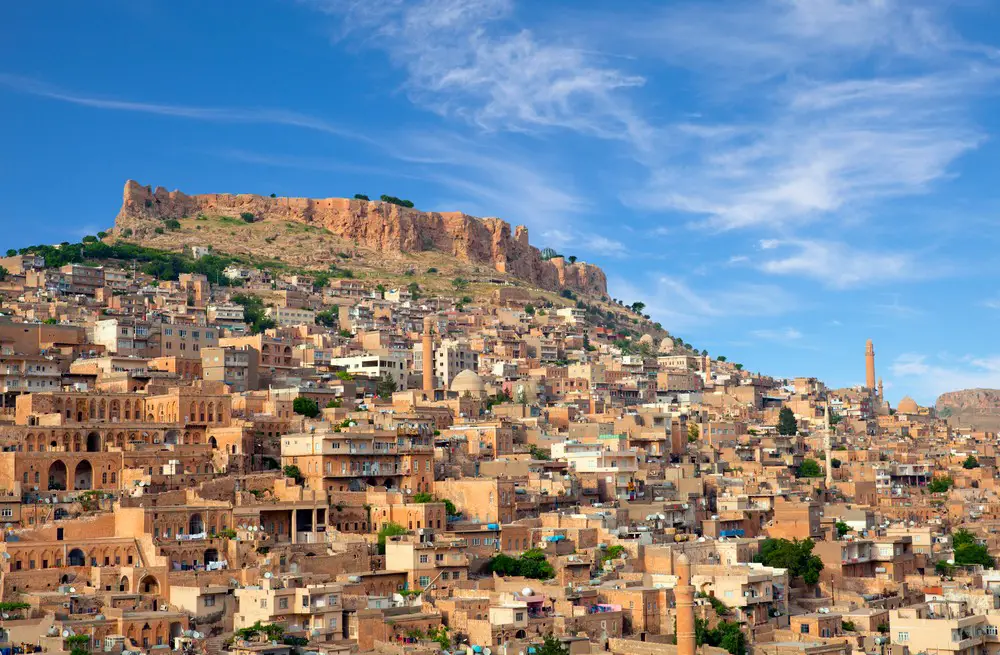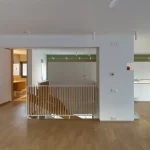Turkish Cultural Heritage Protection, Conserving Historic Turkey Architecture
Turkish Cultural Heritage Conservation
Buildings in Mardin and Antakya, Turkey – British Council’s Cultural Protection Fund
12 Oct 2019
Southeast Turkey Heritage Conservation
Edinburgh steps in to help save Turkey’s heritage at risk
Location: cities of Mardin and Antakya, south eastern Turkey
Edinburgh World Heritage, the charity responsible for the Old and New Towns of Edinburgh World Heritage Site, has just completed a project to help save and protect heritage which is at risk in two historic Turkish cities near to the Syrian border.
Mardin, Turkey:
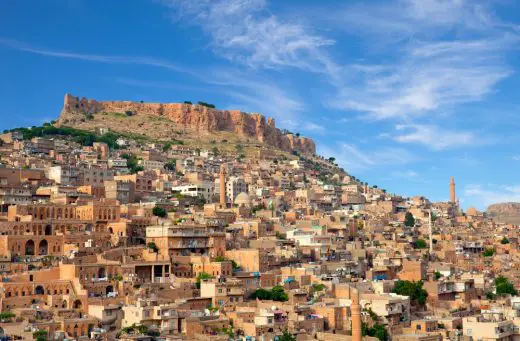
photo © Shuttershock
The project, which was funded by the British Council’s Cultural Protection Fund, has trained local experts, students and stonemasons, compiled a register of buildings at risk, conserved specific historic buildings, implemented energy efficiency programmes, and created an awareness-raising exhibition in Mardin.
Edinburgh World Heritage partnered with KMKD, a local Turkish association formed to help protect Turkey’s cultural heritage. The project focused on the two historic Turkish cities of Mardin and Antakya (Antioch) both of which are about 20 kilometres from the Syrian border and which have been affected by the ongoing civil war.
The British Council’s Cultural Protection Fund is intended to help safeguard and promote cultural heritage at risk due to conflict overseas.
The project also developed new solutions to ensure historic buildings are more energy efficient and better able to cope with the up to 50 degrees centigrade temperature change between summer and winter. Local communities, teachers and school children have also been involved in the project with the aim of developing a sense of ownership for the conservation of their heritage.
Conservationist working on the Tamirevi museum building:
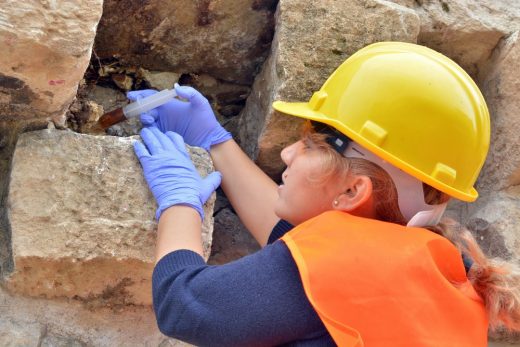
photo © KMKD
The project in numbers:
• Over 1,000 historic buildings were surveyed, and a ‘Buildings at Risk’ register has been created similar to the approach used in the UK
• 300 Turkish students, professionals and heritage managers have been trained in conservation best practice in both Turkey and Edinburgh
• 35 master stonemasons and joiners have been trained in the latest conservation techniques
• 12 training events have been conducted including two heritage leadership schools in Edinburgh
• One major exhibition has been mounted in Mardin, in a 17th century building conserved and refurbished by the project, which opened this week.
Adam Wilkinson, Director of Edinburgh World Heritage commented: “the conservation of Edinburgh’s historic environment is viewed internationally as a success story. With over 4,000 listed buildings within the city-centre World Heritage Site, Edinburgh is one of the most authentic and complete historic cities in the world. We have been delighted to work with our Turkish partners, share Edinburgh’s expertise overseas, as well as bring home some ideas that will help us here. Events of recent days underline the importance of conserving the outstanding heritage of the area.”
Tamirevi Museum opening 10 October 19:
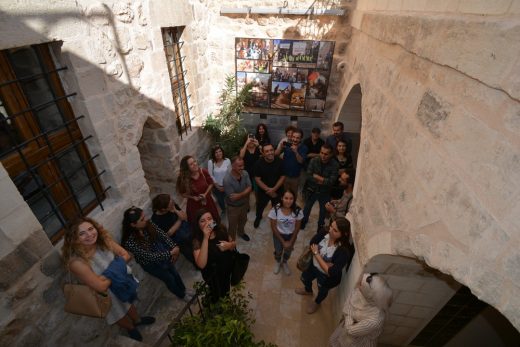
photo © KMKD
İsmail Yavuz Özkaya , the Chair of the Board at KMKD, said: “we have been working to document, protect and raise awareness about the diverse and rich, yet abandoned and ignored Armenian, Greek, Jewish, Syriac and Georgian cultural heritage in Turkey since 2014. The KORU project, and its inspiring training programme, raises public awareness of the protection of our common heritage.
It is an on-site historic preservation programme which prioritises energy efficiency systems – a first in Turkey – and has presented us with new opportunities in the preservation field. I am grateful to our KMKD team who worked hard to turn this project into a success, our Edinburgh World Heritage partners for their work and contribution throughout, and the British Council for their generous support for the protection of our common heritage.”
Stephen Stenning, the Head of Arts and Society at British Council said: “British Council is delighted with the results that Cultural Protection Fund (CPF) projects have produced since 2016. CPF initiatives across the wider Middle East and North Africa region have ensured cultural heritage is better safeguarded for future generations, the heritage workforce has increased capacity and local communities are more able to care for, value and benefit from their own heritage.
The KORU project is a strong example of how CPF grantees work closely with organisations and communities on the ground, sharing skills and knowledge. The impressive outputs from this project will ensure that Turkish heritage is protected for future generations.”
Stonemasons working on the Tamirevi museum:
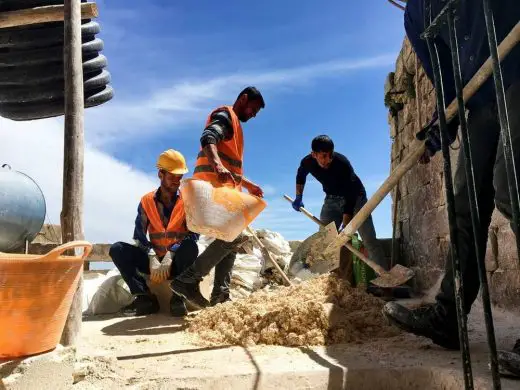
photo © KMKD
About Edinburgh World Heritage
We are an independent charity with the aim of ensuring that the city’s World Heritage status is a dynamic force that benefits everyone. Our mission is to connect people to their heritage in everything we do – whether through the conservation of historic buildings, delivering improvements to the public realm, or engaging people directly with the rich heritage of their city.
About KMKD
The Association for the Protection of Cultural Heritage (KMKD) was established in 2014 so as to ensure the activation and development of cultural heritage activities in Turkey and to organize joint activities and projects with the persons, institutions and organizations engaged in cultural heritage at international and local level. KMKD primarily aims to protect the movable or immovable assets or cultural heritage that are under the threat of destruction, are already destroyed and are threatened and to restore them in accordance with their original structures.
The association intends to raise public awareness, attract the attention of local and national authorities to this subject and raise the awareness of public authorities about the adoption of cultural heritage so as to protect such works and structures and convey them to future generations. It also attaches importance to the strengthening of communication between the persons and institutions endowed with academic knowledge and practitioners within the scope of potential restoration activities.
Turkish Cultural Heritage: Edinburgh World Heritage / KMKD images / information received 121019
Location: Mardin & Antakya, southeast Turkey
New Turkish Architecture
Contemporary Turkish Architectural Projects
Turkish Architecture Design – chronological list
Tetusa Oasis Thermal Resort, Çeşme, western Turkey
Architects: ENOTA
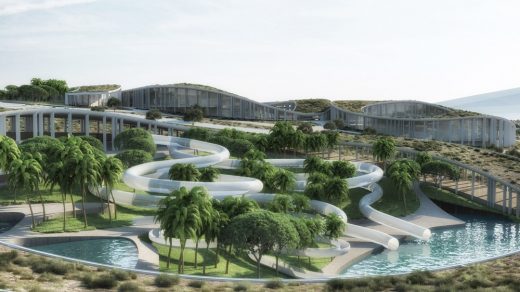
image courtesy of architects
Thermal Resort in Çesme
Urban Rural Housing, Beyoğlu
Architects: Eray Carbajo
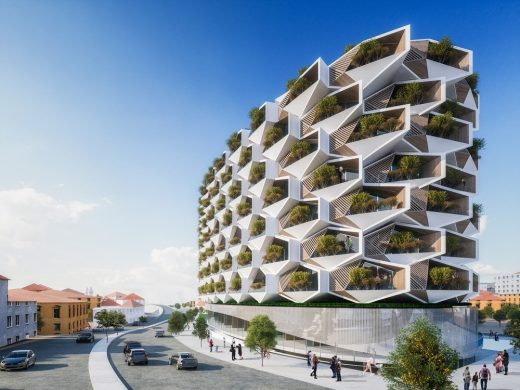
image courtesy of architects
Residential Building in Beyoğlu
Turkish Architecture – Selection
Izmir Transportation Hub, Izmir
Design: Eray Carbajo
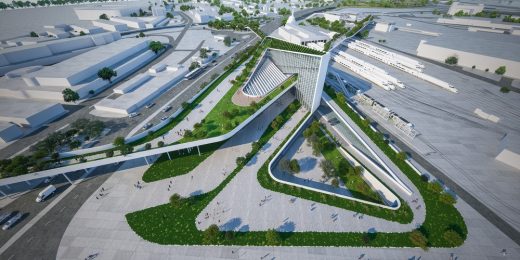
image courtesy of architects
Turkish Transportation Hub Building
Narlidere House, Izmir
Design: Boran Ekinci Architects
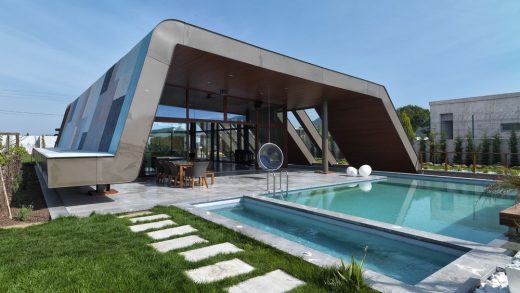
photograph : Cemal Emden
Contemporary Property in Turkey
Comments / photos for the Turkish Cultural Heritage: Edinburgh World Heritage / KMKD page welcome
Website: Ankara, Turkey

